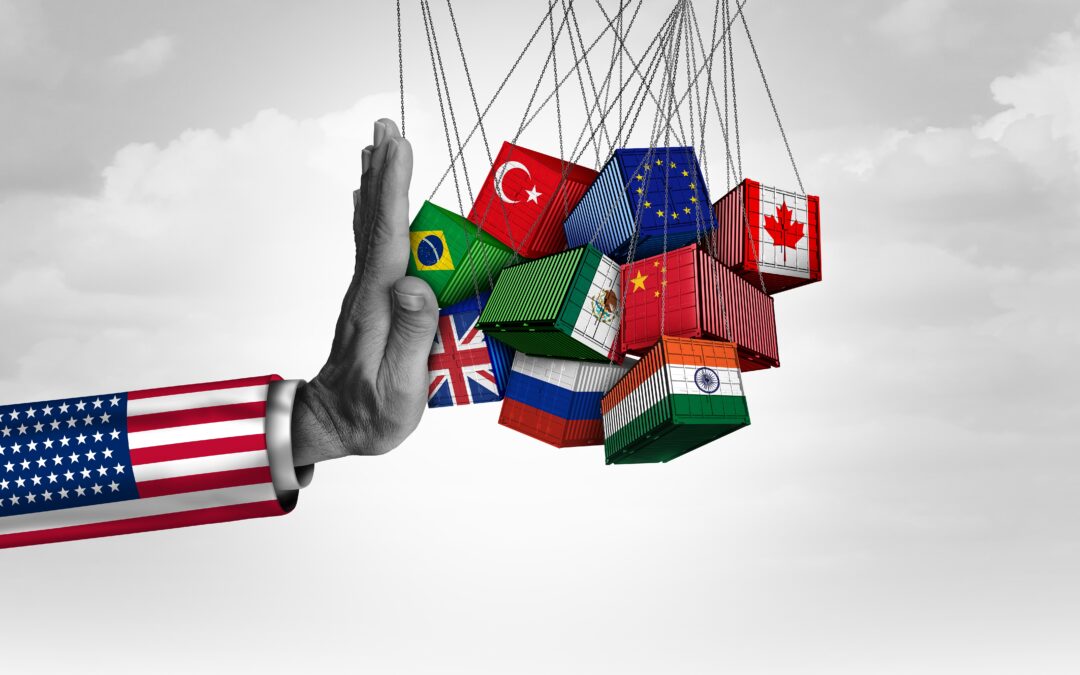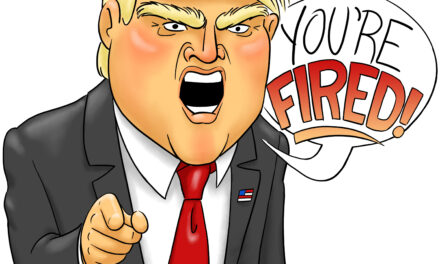President Trump is back on the warpath — this time threatening a new round of tariffs on producers of semiconductors and pharmaceuticals if they won’t promise to onshore their production.
Why would he target these two sectors specifically?
And why now?
The answers and everything else you need to know are in today’s episode of Moneyball Economics.
Just click below to roll the video tape:
Video transcript:
Welcome to Moneyball Economics.
I’m Andrew Zatlin, and guess what … Trump has at it again! He came out swinging this week. He wants to see much more onshoring of manufacturing for semiconductors and for pharmaceuticals, and if he doesn’t get that commitment, he’s just going to jack up tariffs again.
Why is he targeting pharmaceuticals and semiconductors … and why is he doing it now?
Well, it’s likely he got a look this week at the latest monthly international trade report. It’s a report that follows exports and imports into the United States, and in looking at that, he probably didn’t like what he sees.
Remember, Trump is trying to reduce our balance of trade deficit.
He’s trying to bring jobs back and improve our economic picture, and in this latest report, he’s not exactly getting that, which is why he’s jumping on these two areas.
So without further ado, let’s take a look at some of the detail…
First and foremost, we have to talk about the role of the tariff in April. We’ve talked about here a lot of the concept of front running that to avoid the higher cost the tariffs would create in April, a lot of companies front ran it. They bought a lot of inventory, they imported a lot of stuff in February and March, but it’s one thing to hear that. It’s another thing to actually see that if you compare this year, the first half, the data, by the way, only goes through June, so we only have the first half of this year.
We compare this year to last year, the amount of imports surged over 10% in just six months. 200 plus billion dollars of extra imports came in, and they came in pretty much in that February, March and April timeframe. That’s when we saw this big surge.
So we’ve got this massive surge in imports, number one.
But if you’re Trump and you want to bring down imports just in general, it’s important to look at certain line items because, guess what? This isn’t really spread out. It’s not dispersed. There are some specific line items that are driving up overall our import growth and then also this front running and just in general, you want to bring ’em down. It’s real easy.
There’s some low hanging fruit semiconductors. Let’s talk semiconductors for a minute.
Semiconductors in and of themselves, global sales are nearly three quarters of a trillion dollars, and they’re just going to go up and up and up. We’re going to see a trillion dollars sales market in about two years.
You don’t want to let that slip through your fingers, and yet that’s what’s happening in the United States. We’ve got manufacturing from Intel Micron, not Texas Instruments, but by and large most manufacturing is happening in China and especially in Taiwan.
You want to bring that back here, not just because economically it’s a big market, but it also pulls in other type of activity. For example, you’ve got packaging jobs. Once you start with semiconductors, which is the bedrock for everything, electronics, you can start bringing in maybe some equipment assembling. That’s why Apple raised their hand and said, “yeah, we’ll start to assemble in the United States.” On and on on.
You’re not just pulling in semiconductors. If you raise tariffs and say, make it here, you’re pulling in all the rest of the ecosystem. So there’s a lot of jobs and a lot of revenue here at stake.
There’s another reason why you go after semiconductors, because semiconductors like Nvidia chips, they’re very powerful. They enable a lot of things and it creates leverage. Whoever has control of those chips, guess what?
Right now they’re made in Taiwan, and we know China wants Taiwan, so that gives China some leverage.
They can threaten Taiwan and thereby threaten the supply chain for the United States. These chips are critical for a lot of our military and defense needs.
So by onshoring that manufacturing into the United States, there’s a security element here. It’s important to the United States not to give China leverage. That’s semiconductors. And in fact, if you take a look at what happened that front running, you’ll see that a huge chunk was basically all things made in China, most of which was electronic gear.
We don’t import semiconductors directly very much. We import them within embedded in already-assembled devices, and that’s what Trump is trying to reduce in some way, shape, or form. I mean, take a look at what happened with China.
A second area, the low hanging fruit I’m talking about though is pharmaceuticals. Take a look at pharmaceuticals here for a second. Not only are pharmaceuticals over 10% of the total imports into the United States, that’s huge.
It’s just growing and growing and growing.
That wasn’t the case, say pre-COVID, but certainly now we’re suddenly seeing that.
In the last year, roughly 220 billion of pharmaceuticals were imported in the first half of this year. We’re almost there all ready. This is a single line item in the balance of trade that is driving things into the negative. And so if you want to improve the trade picture, this is where you go. Pharmaceuticals, and a lot of this is hitting India. A lot of it’s hitting Switzerland. I sincerely believe that.
What you’re going to see are companies like Eli Lilly move manufacturing here. They’ve already made those announcements. Puerto Rico’s looking pretty tasty. Maybe real estate and other things in Puerto Rico are going to take off. But by and large, the reason why Trump is coming out is he wants to improve our balance of trade picture and pharmaceuticals.
It’s so easy.
Unlike semiconductor manufacturing, pharmaceutical factories can be spun up pretty quickly.
Semiconductor manufacturing takes a couple of years to get those factories off the ground and running, not so the case with making aspirin. You can do that quickly over here. In any case, that’s why Trump is acting up, and that also speaks to why I have been saying that we are in an eye, the hurricane, and we’re going to have some turbulence as we start to leave it.
See all this tariff front running ended. Everyone’s got all this inventory on their shelves, and that means two things…
One, demand’s going to drop in the near term for imports because they imported everything they need. But two, when that stockpile runs dry and it will as of August, they’re going to be importing now at the higher tariff rates. And guess what? That is inflationary. It already is a little inflationary. The turbulence we’re going to see is more in inflation. That’s all I have for you today.
We’re in it to win it.
Zatlin out.

Andrew Zatlin
Editor, Moneyball Economics





